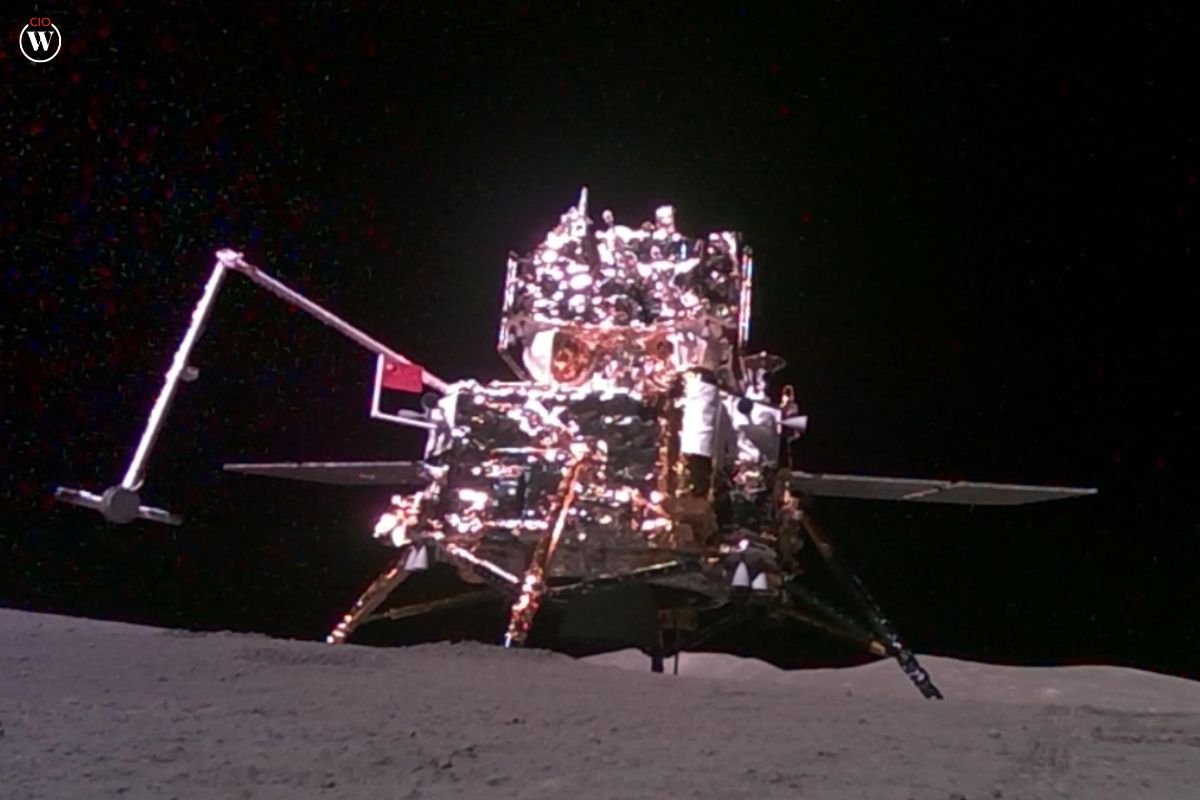Source – space.com
This landmark event saw nearly two kilograms of moon rock and dust, collected by China’s Change 6 mission, make its way home. The Change 6 mission lander, which had landed on the lunar surface a few weeks earlier, retrieved the samples from the moon’s crust. These samples were then placed in a return capsule, which rendezvoused with the Change 6 mission mothership in lunar orbit. The samples traveled the 380,000-kilometer journey back to Earth before parachuting into Inner Mongolia, where scientists eagerly awaited their arrival for study.
This mission marks a notable advancement from the Chang’e 5 mission of 2020, which also returned lunar samples but from the moon’s near side. For the first time, this return involved material from the moon’s far side—a region perpetually turned away from Earth. This unprecedented achievement required additional coordination, including using dedicated satellites for communication relays. The scientific community is hopeful that analyzing these samples will shed light on a longstanding enigma in planetary science: the striking differences between the moon’s near and far sides.
The Moon’s Dichotomy: A Longstanding Mystery
The moon’s near side, visible from Earth, features prominent dark patches known as “maria,” which are basaltic plains formed from ancient volcanic activity. These maria are surrounded by brighter, cratered highlands. In contrast, the far side of the moon, which was first glimpsed in 1959 by the Soviet Luna 3 spacecraft, displays a radically different landscape. The far side is predominantly rugged highland, with only a few scattered maria. This discovery contradicted the previous assumption that the far side would resemble the near side.
Further investigations, including gravity measurements from the GRAIL spacecraft, revealed that the far side’s crust is about 20 kilometers thicker than that of the near side. Scientists have proposed various theories to explain these differences. The widely accepted giant impact hypothesis suggests that a Mars-sized body, known as Theia, collided with Earth shortly after its formation. This collision ejected material that coalesced into the moon. The moon, once much closer to Earth, experienced intense tidal forces, which might have influenced its early evolution.
New Insights and Future Discoveries
Recent research proposes that the disparity between the moon’s hemispheres might be due to the early conditions of the moon rather than tidal forces. When the moon was newly formed, Earth was much closer and significantly hotter, with its surface vaporizing and cooling the nascent moon’s far side. This thermal gradient likely led to the condensation of lighter minerals like feldspar on the far side, contributing to its thicker crust.
This theory is supported by orbital surveys showing a higher concentration of feldspar on the far side compared to the near side. This process might have also led to the accumulation of radioactive minerals on the near side, which contributed to volcanic activity and the formation of the maria. While this theory presents a compelling explanation, more evidence is needed for confirmation.
The Change 6 mission’s samples are expected to provide critical insights into these hypotheses. The “dark side” of the moon, often misconceived as perpetually unlit, actually receives equal illumination as the near side during its lunar day. The term “dark side” might be better interpreted as the side we know the least about. With the new samples, scientists are on the brink of answering long-standing questions about the moon’s far side, marking the beginning of a new era in lunar exploration. The anticipated analyses of these samples promise to illuminate many aspects of the moon’s geological history and composition.









